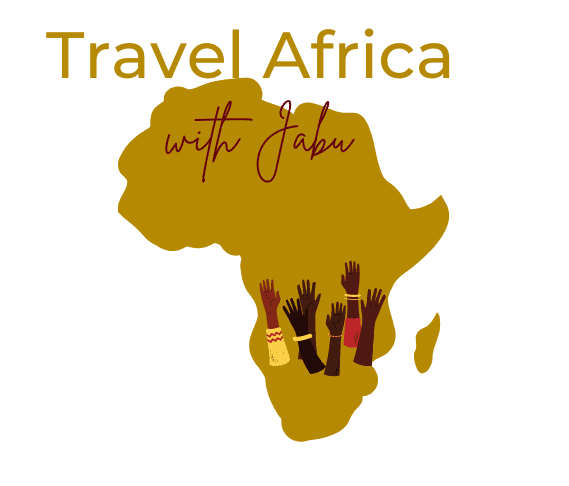Tanzania is the perfect place for any traveler who wants to explore the great outdoors. The country is home to two of Africa’s most popular national parks: the Serengeti National Park and Kilimanjaro National Park. Both parks offer amazing opportunities to see wildlife and experience the natural beauty of the African landscape. If you’re looking for a more relaxed vacation, you can head to the Zanzibar archipelago and spend some time snorkeling and swimming with whale sharks. This travel guide will help you plan the perfect trip to Tanzania.
Languages: There are over 120 languages spoken in Tanzania, although Kiswahili and English are the most widely spoken.
Currency: Tanzanian Shilling (US$1 = 2 300 Tz Shillings)
Religion: Christianity, Islam and traditional religions.
Time zone: GMT +3
Top Five Things to do in Tanzania
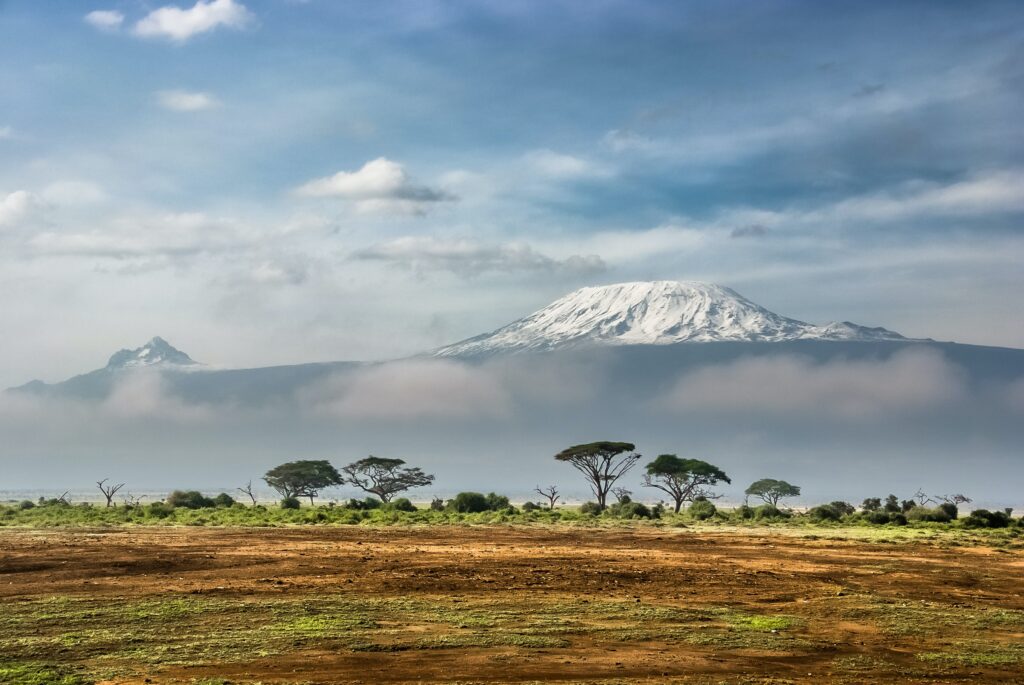
Climb Mount Kilimanjaro
If you’re looking for an adventure, climbing Mount Kilimanjaro should be at the top of your list. It’s an amazing experience that you won’t soon forget. The hike can be completed in as little as five days, but I suggest taking at least seven so that you have time to adjust to the changing altitude. You’ll be glad you did!
On your journey up the mountain, you’ll be treated to stunning views of glaciers, rainforests, and plains. And if you’re lucky, you might even spot some wildlife along the way.
The biggest mistake people make when climbing Mount Kilimanjaro is trying to reach the summit too quickly. Taking your time is the best way to ensure a successful climb. The altitude is by far the most challenging part, and giving your body time to adjust will make all the difference.
Go on a safari in the Serengeti
Serengeti National Park is a must-see for anyone visiting Tanzania. It’s the country’s oldest and biggest national park, and it’s known for being the epicentre of the greatest animal migration on the planet. The migration is an impressive sight, with 1.5 million wildebeest, half a million gazelles, and 300,000 zebras moving through the area. Even after the migration has passed, there are still large populations of buffalo, giraffe, warthog, and other antelopes in the park.
Of course, the park’s 3,000 lions also get a lot of attention. But there are other predators in the park too, including cheetahs, leopards, and bat-eared foxes. For birdwatchers, a safari in Serengeti National Park is a treat – you might see several hundred different kinds of birds during your visit.
Diving and snorkelling in Zanzibar
After seeing all the amazing animals and scenery that Tanzania has to offer, it’s time to fly to the country’s tropical islands and relax in the sun. The most popular destination is Zanzibar, known for its powdery white beaches, turquoise oceans, thriving coral reefs, and verdant woods. You can discover the underwater world by scuba diving or snorkelling, or you can simply lay out on the beach and soak up the rays.
Some of the best scuba diving in the world can be found in the coral reefs off the coast of Tanzania. The Mafia Archipelago is one of the most popular destinations, with the Mafia Island Marine Park safeguarding most of the area, including Mafia Island, as well as the smaller islands of Chole, Juani, and Jibondo, and a number of smaller atolls.
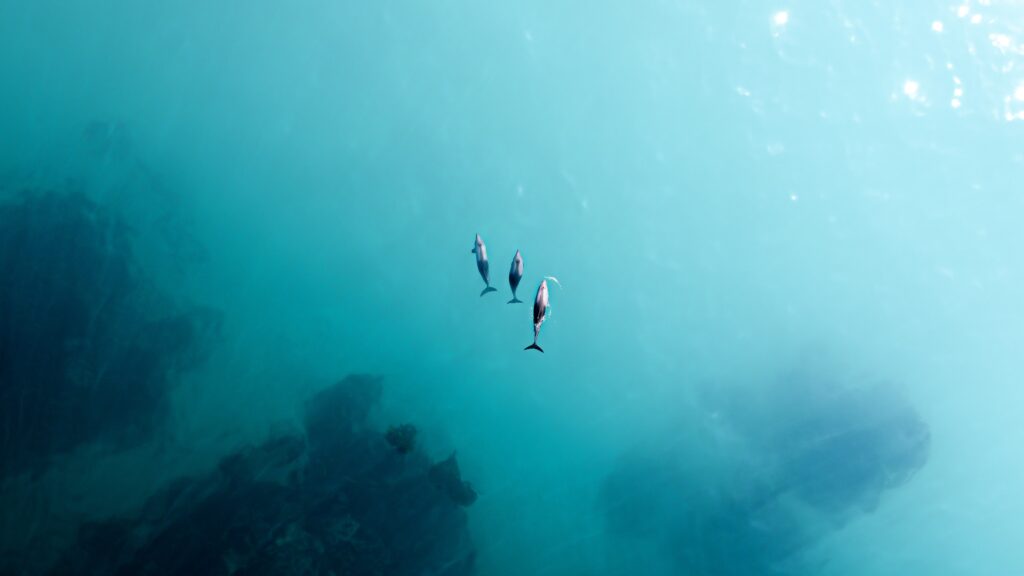
Hot-air ballooning over the Ngorongoro Crater
There’s something truly magical about hot air ballooning. Soar high above the ground, take in panoramic views of beautiful landscapes, and enjoy the tranquility of being up in the air. It’s no wonder that hot air ballooning is one of the most popular tourist activities around the world.
And there’s no better place to go hot air ballooning than the Ngorongoro Crater. This is one of the seven natural wonders of Africa, and it’s easy to see why. The Crater is home to over 25,000 animals, including the big five (lion, elephant, buffalo, leopard, and rhinoceros). It’s also a UNESCO World Heritage Site, and it’s considered the Garden of Eden.
Rides through the Crater begin at Oldupai Gorge, where the oldest remains of humankind were found. You’ll take in shifting sand dunes made from volcanic ash from the still-active Ol Doinyo Lengai. The Ndutu plains are exceptional for game viewing, and in the spring, the cubs, foals, and lambs roam with the herds. The Ngorongoro Conservation Area is also one of the country’s best birding destinations.
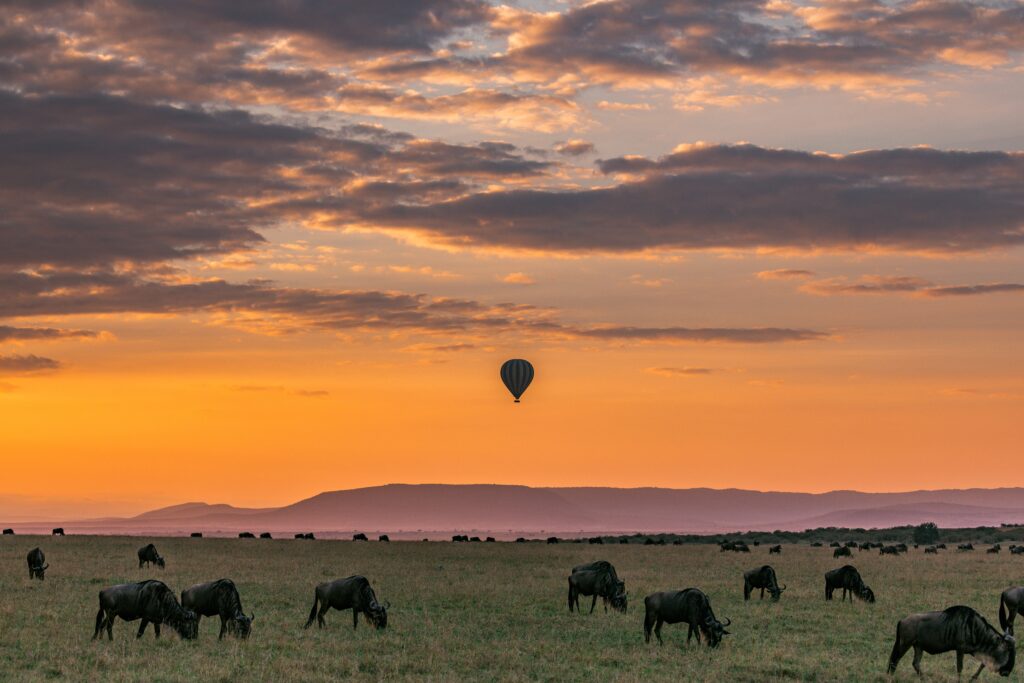
Booking a homestay
When you hear Tanzania, most people think of the Serengeti and its Great Migration of Wildebeest. Or perhaps it’s Mount Kilimanjaro?
But what about the people of Tanzania? If you really want to get to know a place, it’s the people that will show you the way. And there’s no better way to do that than by staying with a local family in a homestay.
A homestay is exactly what it sounds like – you stay with a local family in their home. You eat with them, sleep in their house, and experience daily life alongside them.
It’s an incredible way to learn about a new culture and to get a true sense of what life is like in a place. And in Tanzania, there are plenty of homestay options to choose from, whether you’re interested in staying in a traditional village or in a more modern town or city.
Other things to do see and do in Tanzania
Explore Tanzanian culture
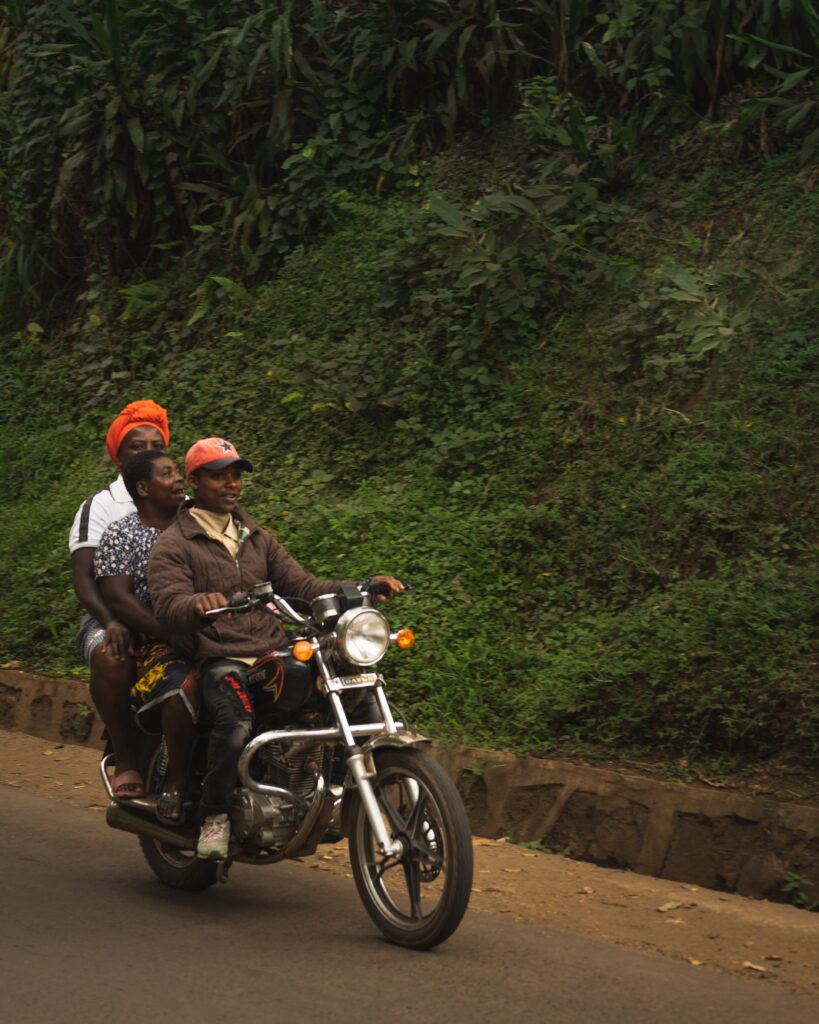
There are plenty of cultural experiences to be had in Tanzania, including hiking up Kili with a local Chaga villager, tracking the Big Five with a Maasai guide, and learning about the blended culture of Zanzibar and the Swahili coast.
There are around 126 languages spoken in Tanzania, including the official language of Tanzania, Kiswahili. English is also widely spoken. Other languages such as Maasai, Bemba, and Sambaa are also spoken by different ethnic groups in Tanzania.
Many of these groups host visitors on cultural excursions. These include the well-known Maasai of the northern highlands, the Chagga of the Kilimanjaro and Meru areas, and the Hehe of Iringa in the south.
Play on Tanzania’s beaches
If you’re looking for some of the best beaches in Tanzania, you’ll want to check out the following. Each of these beaches has something unique to offer, and you’re sure to find the perfect spot to relax and enjoy the incredible views.
Kipepeo beach
Kipepeo beach is located on the east coast of Tanzania, and it’s known for its beautiful white sand beaches. The water is crystal clear and perfect for swimming, and there are plenty of beach umbrellas and sun loungers for visitors to use. There are also a few restaurants and bars in the area, so you can grab a bite to eat or a refreshing drink while you’re enjoying the views.
Bongoyo Island beach
Bongoyo island beach is another great option if you’re looking for beaches in Tanzania. This small island is located just off the coast of Dar es Salaam, and it’s a popular spot for snorkelling and diving. The water is warm and clear, and there is plenty of fish to see. There’s also a small beach bar where you can get drinks and snacks, and there’s a path that leads to a lookout point where you can get a panoramic view of the island.
Paje beach
Paje is another beautiful beach that’s located on the east coast of Tanzania. This beach is popular with kitesurfers, as there’s always a consistent wind blowing offshore. The water is shallow and perfect for swimming, and there are plenty of beach umbrellas and sun loungers for visitors to use. There are also a few restaurants in the area, so you can grab a bite to eat without leaving the beach.
Mbudya Island beach
Mbudya Island is a small, secluded island off the coast of Dar es Salaam. The island is a perfect place to relax and escape the hustle and bustle of city life. The sparkling white beaches and clear blue waters are simply beautiful, and there are plenty of beach umbrellas and sun loungers for visitors to use. There are also several restaurants on the island serving fresh seafood, and the views of the Indian Ocean are simply stunning.
Nakupenda beach
Nakupenda is one of the most popular beaches on Zanzibar, and it’s easy to see why. The white sand beaches and clear blue waters are simply incredible, and there are plenty of beach bars and restaurants to keep visitors entertained. The beach is also situated close to some of the best diving and snorkelling spots on the island, making it the perfect place to spend a day or two.
Iringa
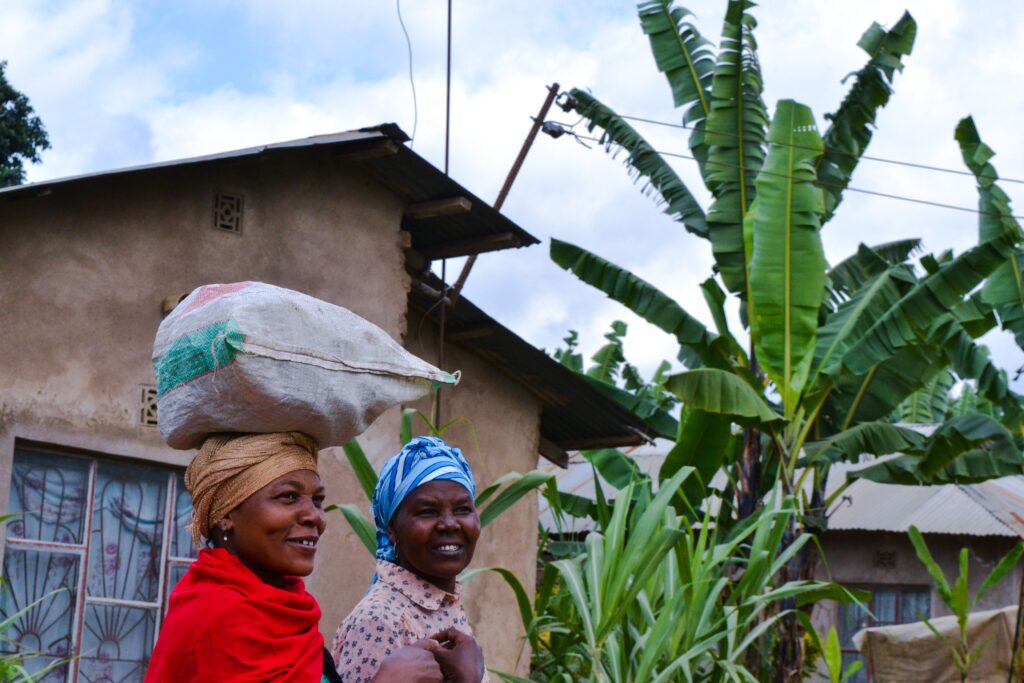
Iringa is a city located in the Southern Highlands of Tanzania with a population of around 151,345 people. It’s known for its picturesque scenery as it is situated between the Usambara and Uluguru mountains. The name “Iringa” is derived from the Hehe word “lilinga” which means “fort”.
The city served as an important rest and trading post because of its location on the old caravan route between the Indian Ocean coast and Central Africa. The city was also an important staging point during the construction of the Central Line railway system.
Nowadays, Iringa is a popular tourist destination due to its cool climate and beautiful scenery. The city is also home to many reputable educational institutions such as the University of Iringa. The city is also acclaimed for its woven baskets and other crafts that are sold throughout the country and exported internationally. Visit the:
Iringa Boma-Regional Museum and Culture Centre
Gangilonga Rock
Ligereke Rock Paintings
Matumaini Centre
Neema Crafts Centre
Arusha
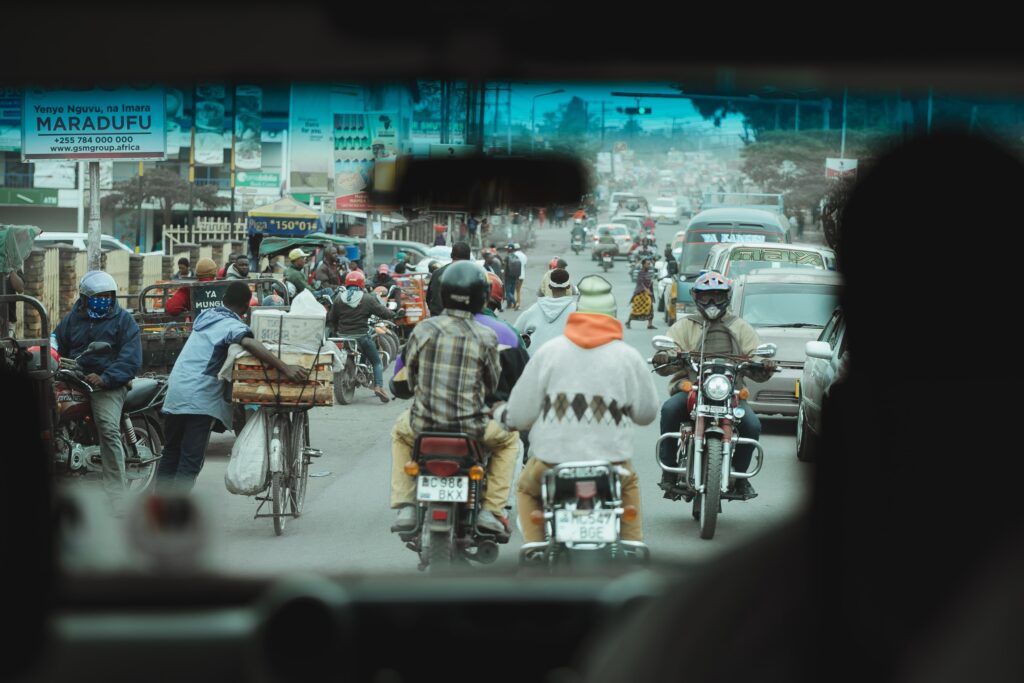
Arusha City, the capital of the Arusha Region, is one of Tanzania’s major cities. The city is located below Mount Meru and on the eastern edge of the eastern branch of the Great Rift Valley. The city has a temperate climate and is close to several national parks, including the Serengeti National Park, the Ngorongoro Conservation Area, Lake Manyara National Park, Olduvai Gorge, Tarangire National Park, Mount Kilimanjaro, and Mount Meru in the Arusha National Park.
Arusha City is a popular tourist destination due to its proximity to the national parks and its status as the gateway to Mount Kilimanjaro. The city is also home to several tourist attractions, including the Arusha Declaration Museum, the Materuni Waterfalls, and the Ngurdoto Crater.
The Arusha Declaration was a manifesto written in 1967 that advocated for self-reliance and self-determination for African countries. The Materuni Waterfalls are located in the Materuni village, about 30 kilometres from Arusha City. The Ngurdoto Crater is a crater lake that is about three kilometres in diameter and is located in the Ngurdoto crater, which is a volcanic crater that is about 20 kilometres in diameter. Also visit:
Arusha Cultural Heritage Centre
Twiga Brewery
Momella Lakes
Old Boma Museum
Lake Duluti
Mount Meru Waterfall
Engare Sero Waterfall
Climb Ol Doinyo Lengai
Ol Doinyo Lengai is an active volcano located in Tanzania’s Arusha area. It continues to captivate geologists because it produces the world’s coldest black lava, which, when cooled, turns into a white rock.
There have been 16 eruptions in the previous century, with the most recent one occurring in 2021. In spite of the fact that it takes around six hours to reach the summit, this peak has been ascended by a number of serious mountaineers, some of whom turned back due to the extreme difficulty of the climb. However, on clear days, the views from the crater rim are spectacular, including a glimpse of Mount Kilimanjaro, Mount Meru, and the Serengeti plains.
Summit Mount Meru
Seriously, don’t overlook Mount Meru just because Kilimanjaro gets all the attention. It may only be Tanzania’s second-highest peak at 4,566 meters, but it’s an amazing experience. I can say without a doubt that Meru is worth your time, and a great way to test your mountaineering skills before summiting Kili. So when you’re planning your trip to Tanzania, make sure to include a climb of Mount Meru on your agenda.
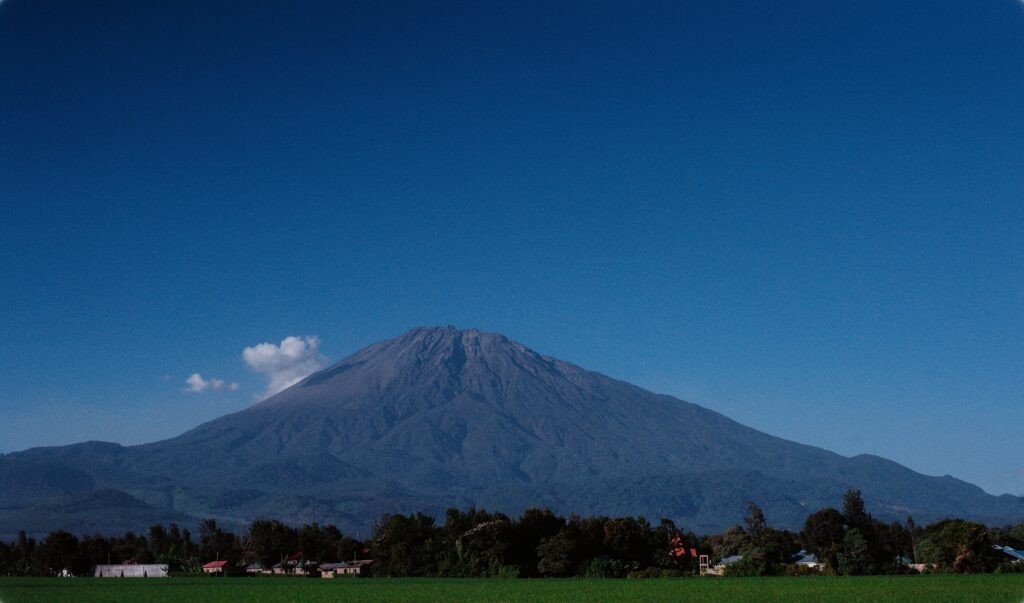
Chemka Hot Springs
The Chemka Hot Springs, also known as the Kikuletwa Hot Springs, is a great spot to relax and unwind after an Adventurous Tanzania tour. Located in the Kikuletwa Valley, it’s just over an hour and a half from Arusha. This jungle paradise is home to pure, bell-like water where you can spend the day lounging and swimming. If you’re feeling active, there’s also rope swinging, tire tubing, and high leaps out of the trees. It’s an unforgettable experience and one of the best things to do in Tanzania.
Empakaai Crater Hike
If you’re looking to get off the beaten path, the Ngorongoro Conservation Area’s highlands are a great place to start. The Empakaai Crater, just 40 kilometers north of the more well-known Ngorongoro Crater, is a hidden gem that’s definitely worth a visit. On a short hike down to the lake, you can see some amazing wildlife, like baboons, buffalo, elephants, and flamingos. It’s an unforgettable experience and one of the best ways to explore the area.
Usambara Mountains
The Usambara Mountains in Tanzania are one of the country’s hidden gems. This amazing place is home to unique plants and animals, like chameleons, as well as a large network of small traditional villages. There are two sub-ranges of the Usambaras, the West Usambara Mountains and the East Usambara Mountains. The East Usambaras are closer to the coast, receive more rainfall, and are smaller than the West Usambara range. People have been living in the Usambara Mountains for centuries, including the Bantu, Shambaa, and Maasai people. If you’re looking for an off-the-beaten-path destination in Tanzania, the Usambara Mountains should be at the top of your list!
Lushoto
When most people think of Tanzania, they picture the bustling city of Dar es Salaam or the vast plains of the Serengeti. But there is so much more to this East African country, including the little-known region of Lushoto.
Lushoto is located in the Usambara Mountains in the northeast part of Tanzania. It’s a lush, green area that’s often referred to as the “Switzerland of Africa” because of its mild climate and picturesque scenery.
The region is home to the Wasambaa people, who have their own distinct culture and language. KiSwahili is also spoken here, as well as Sambaa, which is the language of choice for most residents.
Lushoto is a popular tourist destination, especially for those who enjoy hiking and camping. The area is full of beautiful hiking trails, waterfalls, and forests. There’s also a rich history to explore, as the region was once an important center of the slave trade.
Swim on Mafia Island
Whale Shark Island is a popular destination for anyone looking to get up and personal with these gentle giants during the months of October and March. Although large, they are quicker than you think, and swimming through the coral with lesser fish while sidling up to the world’s biggest fish is an experience you’ll never forget.
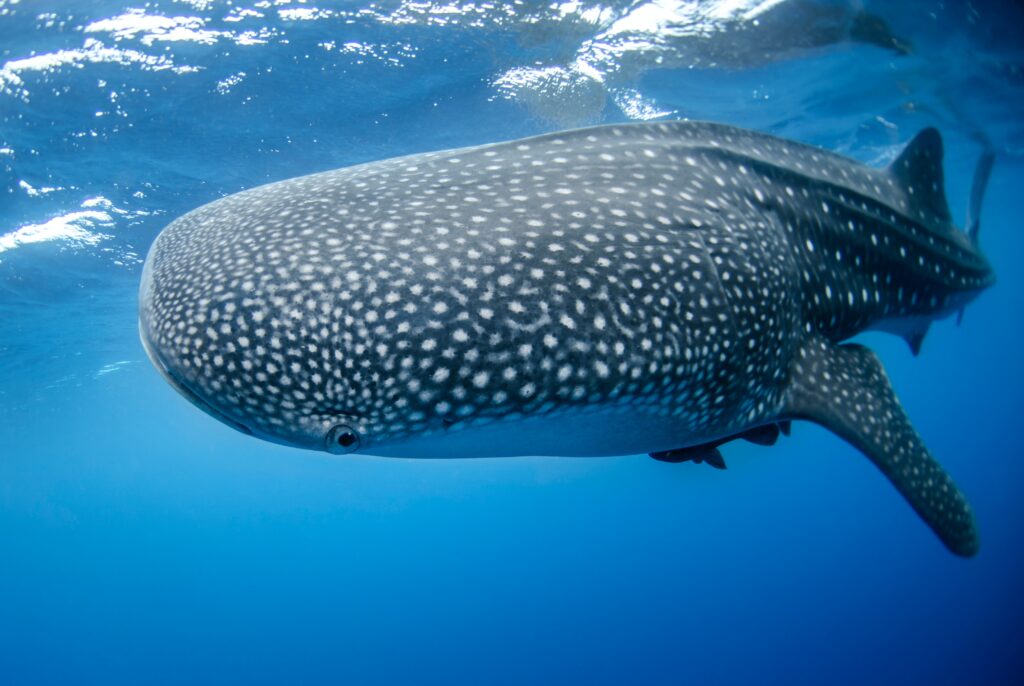
Go to Lake Victoria
The Victoria provides a leisurely and pleasant ride between Bukoba and Mwanza. You’ll barely see more than the lights of fishermen as you cruise through the night, but the sunrises and sunsets are always beautiful. Lake Victoria is Africa’s largest lake and the world’s second-largest freshwater lake. It’s almost 400 000 years old and is shared by Tanzania, Kenya, and Uganda. It’s also the primary source of water for the River Nile. You can enjoy hiking, fishing, and horse-back riding on the tropical island of Ssese or explore the Mabamba Wetlands if you’re a keen twitcher. A few more days in the vicinity means you can also explore the source of the Nile and spend the day enjoying the delightful weather. For the more adventurous traveller, there’s bungee jumping, white-water rafting, and a sunset cruise.

Visit Lake Natron
Lodging on the shores of Lake Natron is a popular tourist destination for those who want to see the large numbers of flamingos and other birds that congregate in the region. Ngare Sero Gorge, however, conceals the region’s true crown jewel: a sequence of breathtaking waterfalls. This refreshing little trip is one of the top picks for things to do around Lake Natron, which may seem strange in the middle of the plains in the middle of summer.
Moshi Town
Moshi is a town in Tanzania located on the slopes of Mount Kilimanjaro. It is known for its coffee production as well as being a popular tourist destination, hosting many visitors who come to see the nearby waterfalls, forests, and natural springs.
Moshi has a population of over 140,000 people and is the capital of the Kilimanjaro Region. The town is a gateway to the Northern Safari Circuit and is served by the Kilimanjaro International Airport.
Coffee production is a major industry in Moshi and the surrounding areas. The town is home to the Tanzania Coffee Research Institute, which works to improve the quality of the country’s coffee.
Moshi is also a popular tourist destination, due to its proximity to Mount Kilimanjaro and the many natural attractions in the area. Visitors can go hiking, bird watching, and visit the Moshi Museum, which showcases the history and culture of the Chagga people, who make up the majority of the town’s population. Also visit:
Lake Chala
Marangu Village
Rau Forest
Kilasiya Waterfall
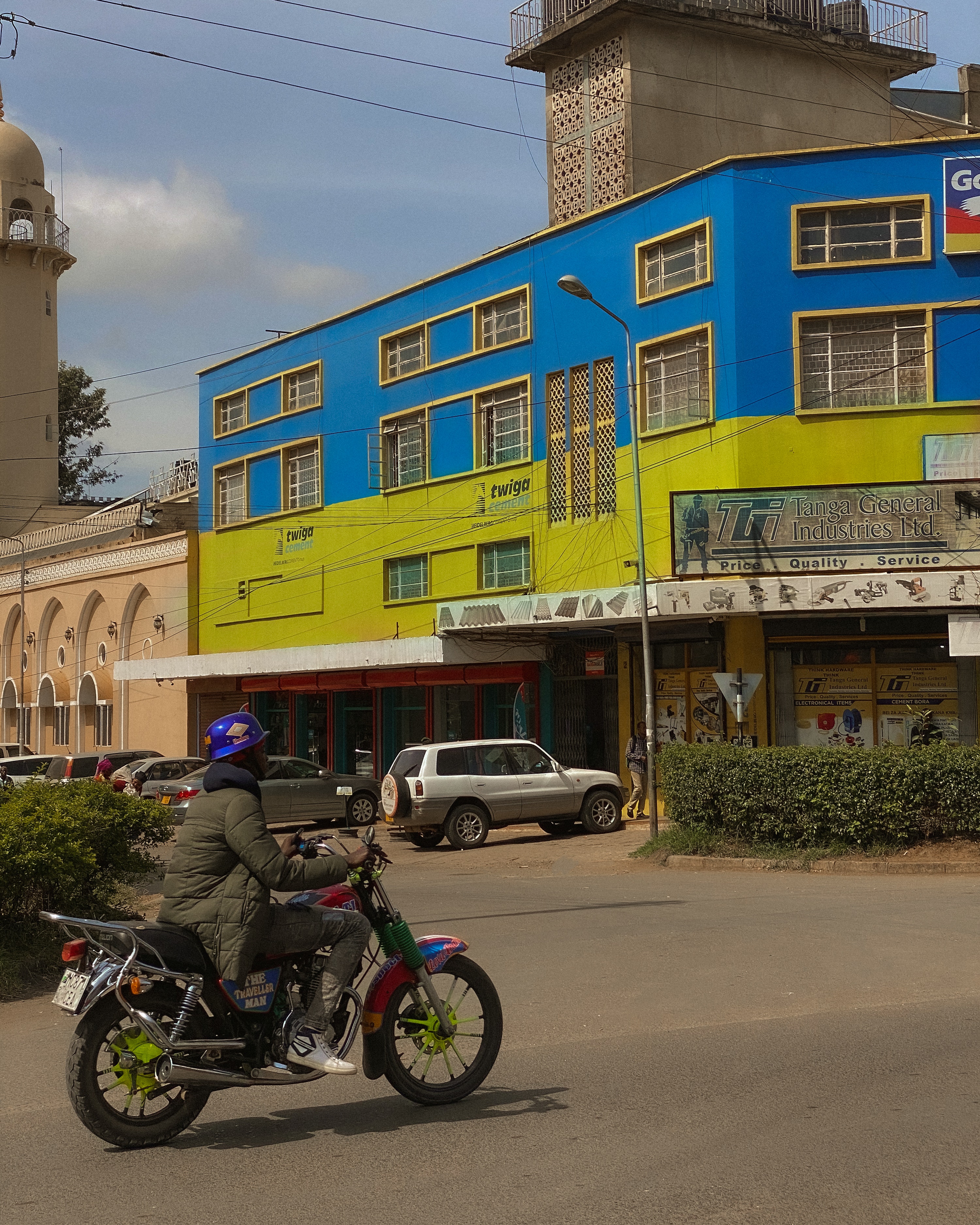
The National Parks of Tanzania
Ruaha National Park
If you’re looking for an amazing wildlife experience, Ruaha National Park is the place for you. With 20,226 square kilometres of space, it’s the second biggest park in Tanzania. You’ll see plenty of animals coming to the Great Ruaha River and other water sources during the dry season. And the scenery is breathtaking, with baobab trees dotting the steep slopes, lush greenery along the river, and vast grasslands. It’s an adventure you won’t soon forget!
Tarangire National Park
Grassland and woodlands may be found in the northern part of the park, while low hills, scrub, and marsh can be found in the southern part. The Tarangire River, which drains into Lake Burunge to the west, forms an evergreen corridor across these ecosystems drawing the park’s most famous inhabitants – the elephants.
The northernmost part of the river’s territory is where visitors go on wildlife drives since it is the most accessible to vehicles. You’ll be enchanted by majestic baobabs and the finest birding in East Africa.
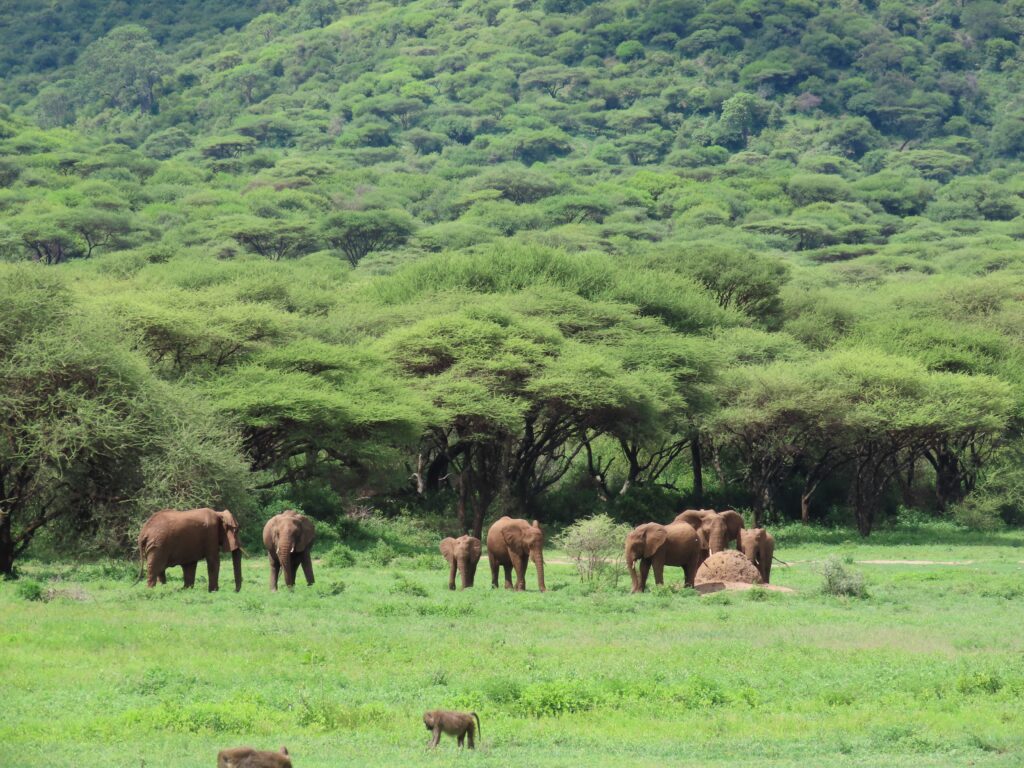
Gombe National Park
Visit the Gombe wilderness any time of year, and you may retrace the steps of earlier explorers.
While the lush flora blossoms offer an astounding panoramic picture and waterfalls are at their peak during the rainy season (November to Mid-May), the dry season offers the greatest photo shooting opportunities and both short and long hikes. If you are going solely for the chance to spot the park’s famous chimpanzees, the rainy season is your best bet.
Herpetologists are also drawn to the park for the sheer variety of reptiles and amphibians located in the area, some of whom are endemic to the region.
Mikumi National Park
Mikumi is the most alluring safari park in Tanzania. In this park, you may experience the thrill of an African safari without wasting any of your time. Lions, giraffes, kudus, sables and hippos are easily seen in the Park. Its proximity to Dar makes it a convenient stop for weekend tourists who don’t have time for a lengthy safari.
Lake Manyara National Park
The towering trees of the groundwater forest, the tree-climbing lions, the soda lake populated by hundreds of pink-hued flamingos, enormous water birds, and the bands of baboons and blue monkeys, and the rift valley escarpment all contribute to the memorable nature of a safari in this region.
Most notably, the park is home to tree-climbing lions, a Marang forest, a hot spring, a groundwater forest, a variety of bird species, and the rift valley. Plan a vacation to Lake Manyara National Park, where you will have an unforgettable experience that will satisfy your wanderlust.
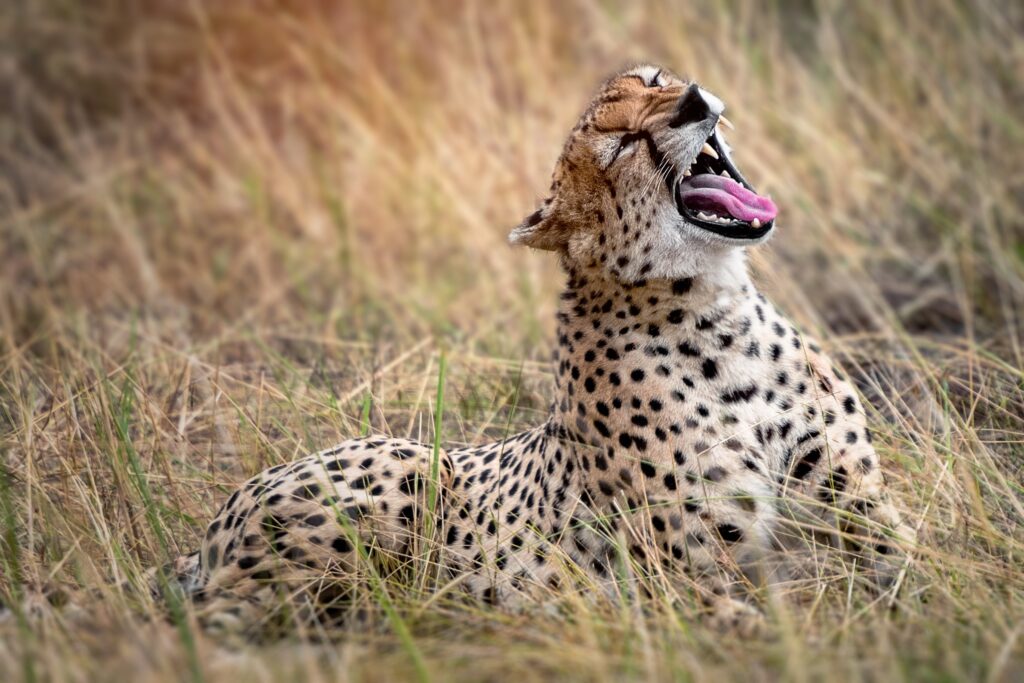
Travel guide to accommodation in Tanzania
If you’re planning a trip to Tanzania, chances are you’re going to want to find the perfect accommodation. After all, Tanzania is home to some of the most beautiful places in the world, and you’ll want to make sure you have a comfortable place to stay during your trip.
There are a few things to keep in mind when choosing accommodation in Tanzania. First, you’ll want to decide whether you want to stay in a hotel, a guesthouse, or a private rental. Each option has its own pros and cons, so it’s important to figure out what’s most important to you before making a decision.
Next, you’ll want to think about your budget. Accommodation in Tanzania can be expensive, so it’s important to find something that’s within your price range. Keep in mind, however, that you usually get what you pay for.
Best budget-friendly options
Tanzania is a popular destination for budget travellers, and there are plenty of accommodation options to choose from. You can find plenty of hostels and guesthouses for around $10 per night, and there are also a number of camping sites where you can pitch a tent for a few dollars. If you’re willing to rough it, you can find some great deals on accommodation in Tanzania.
If you’re looking for something a bit more comfortable, there are also a number of mid-range hotels and lodges that won’t break the bank. Prices start at around $40 per night, and you can find some great deals if you book in advance.
What are the luxury accommodation options available in Tanzania?
There are many luxury accommodation options in Tanzania, from safari lodges to private villas. Here are some of the best luxury accommodation options in Tanzania.
Safari lodges are a popular option for luxury travellers, and there are many to choose from in Tanzania. Some of the best safari lodges in Tanzania include Singita Grumeti, Tortilis Camp, and Selous Impala. These lodges offer unique experiences, with each one offering its own unique blend of luxury, comfort, and adventure.
If you’re looking for a more private luxury experience, you may want to consider renting a private villa. There are many luxury villas to choose from in Tanzania, each with its own private pool, staff, and amenities. Hotels in the major centres come well-equipped to fulfill all your needs, although you may also find well-managed lodges and guesthouses.
Travel Guide to food in Tanzania
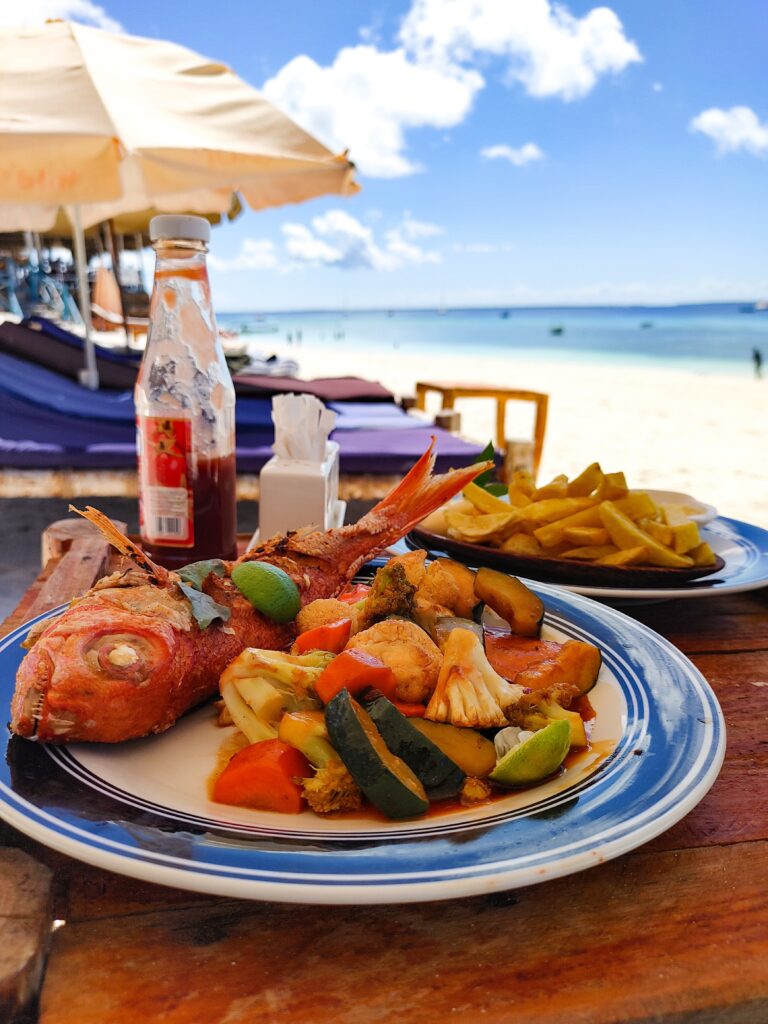
Tanzania offers a cornucopia of culinary experiences, from the coastal aromatic dishes to the more simple fare of the interior. Nyama choma, kiti moto and mishikaki are just a few of the many delicious options awaiting the hungry traveller.
Nyama choma, grilled meat, is a popular dish throughout Tanzania. The most common meats used for nyama choma are goat and beef, although chicken and fish are also grilled. The meat is marinated in a variety of spices before being grilled over an open fire.
Kiti moto, a coconut rice dish, is a popular coastal specialty. The rice is cooked in coconut milk and flavored with spices such as ginger, curry, and chili. Kiti moto is often served with fish or chicken.
Mishikaki is a popular dish in Zanzibar. It is made of skewered and grilled meats, usually chicken or beef. The meats are marinated in a mixture of spices, vinegar and honey before being grilled.
Side dishes
Tanzanian cuisine is quite unique and interesting, blending together aspects of various cultures that have influenced the country throughout its history. Swahili and Indian influences are particularly prevalent, as seen in dishes like samaki (fish curry) and bamia (okra stew). Other popular dishes include mchicha (spinach with peanuts), chapati (flatbread), and kuku choma (grilled chicken).
The variety of locally grown fruits and vegetables is also a key feature of Tanzanian cuisine. Common ingredients include bananas, coconuts, sweet potatoes, yams, and rice. Fresh seafood is also widely available, as Tanzania is home to both the Indian Ocean and Lake Victoria.
One of the best things about Tanzanian cuisine is that it is relatively inexpensive and easy to find. street vendors and small local restaurants are everywhere, and most dishes can be had for less than a few dollars.
What to drink in Tanzania
From the national spirit of konyagi to refreshing safari beer and even world-famous coffee, Tanzania has something for everyone. So, what should you drink when you’re in Tanzania?
Let’s start with the national spirit, konyagi. This spirit is made from sugarcane and is very popular in Tanzania. It’s often drunk neat or with a mixer, and is a popular choice for toasts at weddings and other celebrations. It’s also incredibly strong so drink cautiously.
If you love beer then try Safari. It’s a light beer that is perfect for drinking in the heat. Kilimanjaro is another local beer that is named after the famous mountain. It’s a dark beer that is full of flavor.
If you’re looking for something a little softer, then Tanzania’s fruit juices and soft drinks are perfect. Made with fresh fruits and sometimes sweetened with sugarcane juice and fresh ginger, these drinks are refreshing and delicious.
And of course, no trip to Tanzania would be complete without trying some of the world-famous coffee. Grown in the country’s highlands, Tanzanian coffee is some of the best in the world. You can find it served in most cafes and restaurants, and it’s definitely worth a try.
How to Get Around
There are a few options when it comes to getting around Tanzania. The most common way is by bus, although there are also trains and flights available.
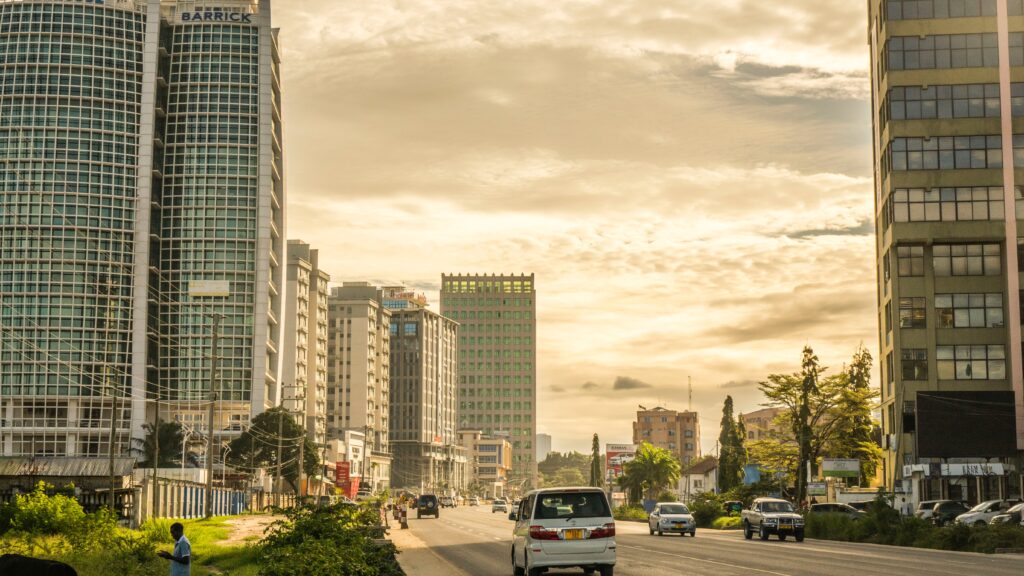
Despite the state of the roads, it’s still quite simple to navigate the country on your own. You can use of one of the many different forms of transportation that are available:
Safari
When you book a safari, the operator or resort will always make arrangements for a driver who also acts as an unofficial guide throughout your trip.
Self-drive
The majority of visitors that visit the safari circuits can hire a car and drive themselves around the country. You can also hire a driver with the car (an additional US$40 – US$60 per day) and go in a four-wheel drive vehicle to see the national parks that are located in that region. Car rental companies do not allow any vehicles other than the designated 4X4 land cruisers to go into the national parks. Depending on the season and the type of vehicle, hiring a car can cost anything from US$80 to US$120 per day.
Air
If you wish to visit multiple different sections of the nation during your trip, the most convenient and time-efficient mode of transportation is to fly inside the country. There are a number of domestic airlines that, in addition to providing flights to the shore, connect the most popular places along the safari route.
Some of the most upscale safari lodges have their own airstrips, and they hire private air charter firms to fly their guests in on tiny aircraft rather than having them drive the lengthy distance on sandy roads. This provides a convenient option to visitors who would otherwise have to drive.
Domestic airlines in Tanzania allow reservations to be made online. For visitors on a tight budget, using a long-distance bus is the most efficient and cost-effective mode of transportation.
Buses
Large buses and dala-dalas cover a nationwide network that connects the main cities, including international lines that go from Dar es Salaam to Nairobi and Mombasa in Kenya. This network includes the dala-dala service. Buses in Tanzania are either government-run or privately owned. The government-run buses are cheaper but are often not as comfortable or reliable as the private ones. Private buses tend to be more expensive but are generally more comfortable and punctual.
For more about using public transport, please read the Zanzibar Travel Guide.
Rail
Tanzania is traversed by two main railway systems, both of which provide a select number of weekly trains to passengers. In the cars that have sleeping berths, there is clean bedding supplied, and there are also eating cars.
However, the rolling equipment on the trains can be old making for a sometimes unpleasant experience. Additionally, the trains get packed with not only passengers but also bags of vegetables and animals.
Visa Requirements
Please see the visa requirements in the Zanzibar Travel Guide.
Best Time to Travel
January and February are the months of capture. The calving season is in full swing in Tanzania, and the country is covered with lush vegetation. Migratory birds can be seen darting among the trees. Because it’s the off-season, there are also fewer people there.
In most cases, there is just one time period that should be avoided, and that is during the wet months of March, April, and May. The wildlife is more dispersed, and beach vacations in Zanzibar are likely to be wet; afternoon downpours are greater along the coast and islands.
Even though May through August will have mild daytime temperatures, the evenings will be somewhat chilly. Bring insulating clothes with you for your game drives in the early morning and late sundowners. It may be bone-chillingly cold inside open-air safari vehicles.
Your view will be less obstructed by other vehicles if you go in either June or September, which are the months on either side of the high season.
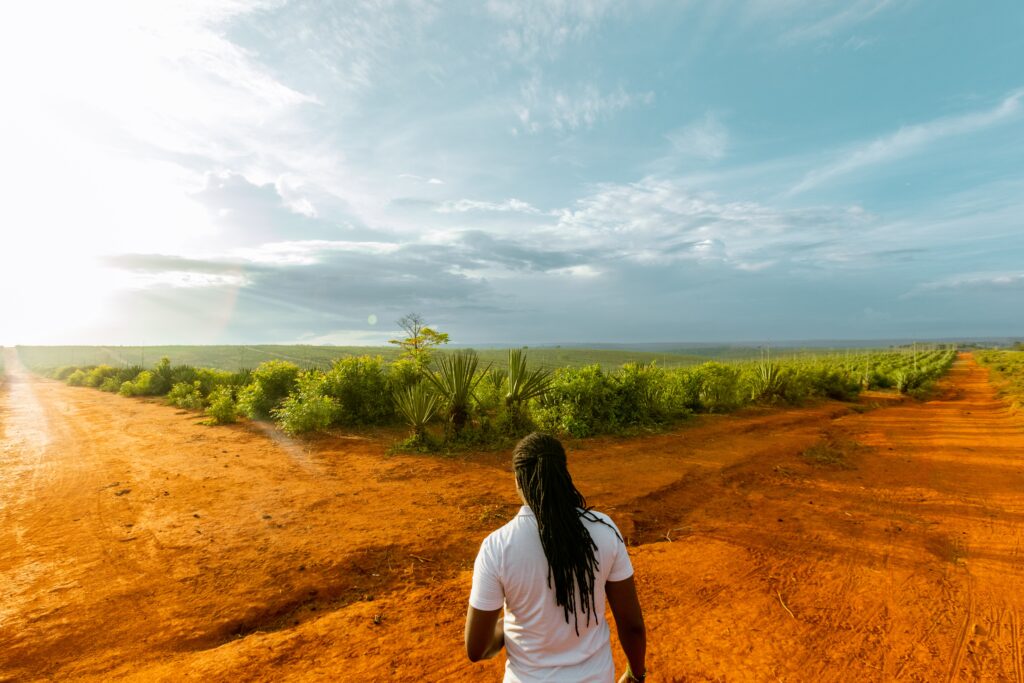
September and October are the ideal months to climb Kilimanjaro because of the temperate temperatures, reduced rainfall, and less cloud cover during these months. However, this also means that the mountain may grow crowded, especially in September.
The brief rains often occur in November and December. These should not interfere with travel, except by drawing in a few additional mosquitoes, but they will spruce up the dry terrain and provide wonderful views, especially for photographers.
Additionally, between the months of April and September, green turtles hatch along the shores of the Mafia Archipelago.
Travel Tips and Hacks
Here are a few travel tips and hacks to help you make the most of your trip to Tanzania:
- Dress respectfully: When travelling to Tanzania, it’s important to dress respectfully. This means avoiding clothing that is too revealing or revealing. It’s also a good idea to cover your shoulders and knees when possible.
- Don’t walk alone at night: Tanzania is generally a safe country, but it’s always best to err on the side of caution. Avoid walking alone at night, especially in unfamiliar areas.
- Learn some words of Kiswahili: Kiswahili is the national language of Tanzania, so it’s useful to learn some basic phrases before you go. Even just a few words will go a long way in helping you to connect with locals.
- Avoid ATM fees: If you’re planning on using your ATM card in Tanzania, be aware that some banks charge a significant fee for this. To avoid this, make sure to get American dollars from your bank before you leave. Merchants and hotels also usually charge a 5% fee on all transactions when you use your credit or debit card.
- Get travel insurance: When travelling to Tanzania, it’s a good idea to get travel insurance. This will protect you in case of any unforeseen circumstances, such as lost luggage or medical emergencies.
By following these tips, you’re sure to have an amazing and memorable experience in Tanzania.
